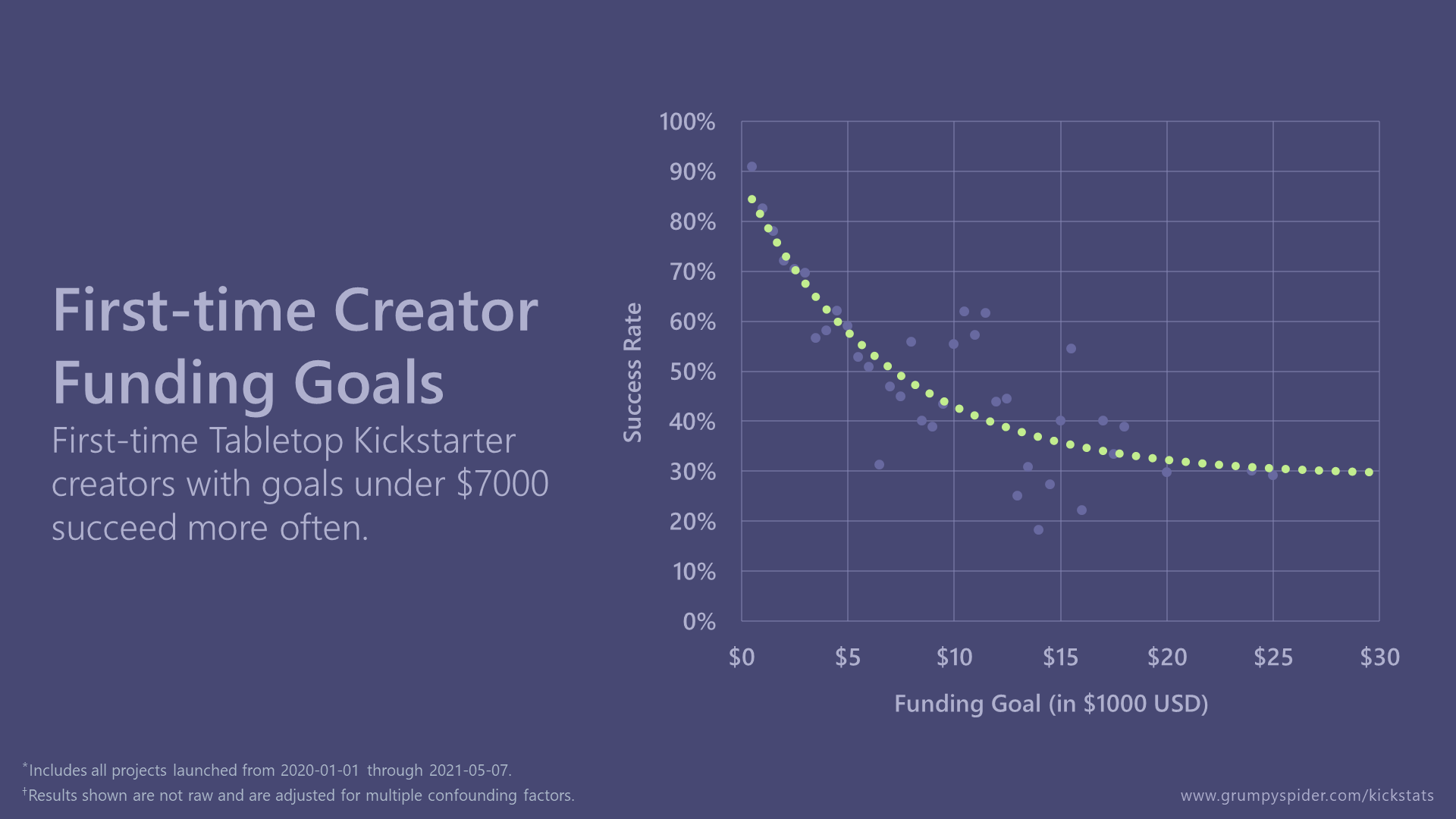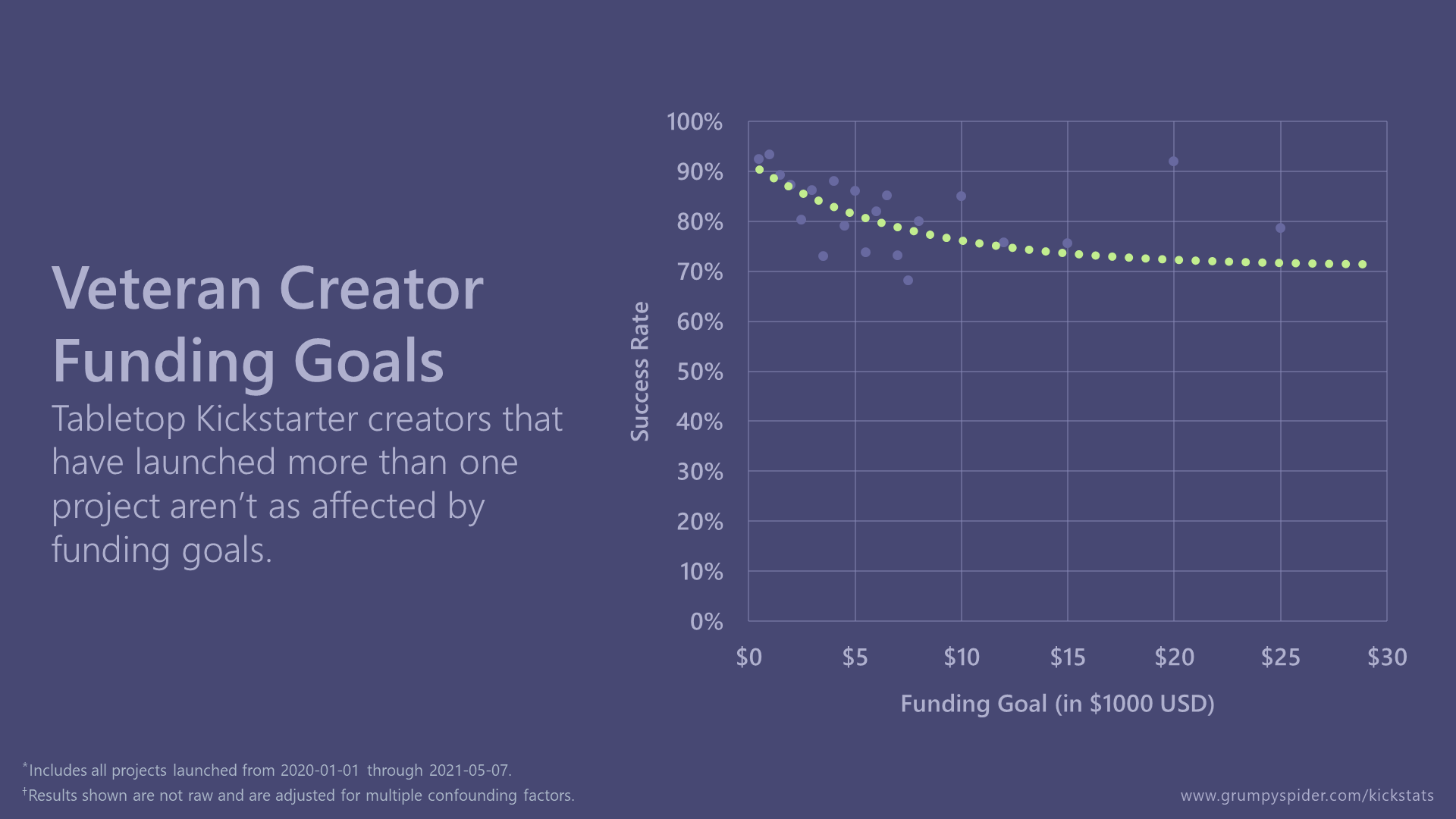Your cart is currently empty!
Kickstats: Go Big or Go Humble?

Photo by Randy Tarampi on Unsplash
UPDATED 2021-05-11:
This article now includes all Kickstarter campaigns that launched from 2020-01-01 and ended by 2021-05-07. The significant increase in sample sizes has resulted in minor changes to the outcome of our original analysis. Portions of this article have been rewritten to reflect those changes.
Introduction
Here’s a question I’ve run across a few times in the last several months. It goes something like this:
“I have a few different ideas that I want to bring to Kickstarter, but I can only do one at a time. Should I start with the simplest idea to get the hang of things, or should I go with my biggest idea to really get the excitement going?”
It’s a reasonable question to ask. Starting small would certainly be easier, which would be nice as you learn a ton of new things, but the buzz you could create for that truly awesome idea might help get your campaign over the top and even make your other ideas more successful.
I don’t have all the answers, but what we can do is look at how the ambitiousness of your first Kickstarter campaign might affect its outcome. Once we know that key info, we can use it to help us make the best choice possible.
Before We Start
Using Funding Goal
There’s one big caveat we need to keep in mind with this analysis: we’ll have to assume a Kickstarter campaign’s funding goal is a reasonable indicator for how ambitious a project is. There are literally thousands of campaigns to analyze! There’s no way I can go through each individual project and determine its scope. If we’re ever going to get through them all, we’ll have to use the goal as a proxy.
Here’s why I think that’s OK. If the funding goal of a project is $30,000, It’s usually because the project is large enough to justify that goal. Now I recognize that, occasionally, there are campaign’s whose goals are way larger than called for. That’s not going big – that’s going greedy. There are also campaigns that put their funding goal far too low so they can look more successful than they actually are. But after trying a few different ways of filtering out those campaigns, I found that they really don’t make a huge difference in the findings. When I removed the unrealistically low or high goals, the results only changed by around 3-5%, and that change was consistent across several other factors. So whether you leave them in or take them out, you’ll pretty much draw the same conclusions.
Tabletop Kickstarters Only
If we’re going to use the funding goal as a proxy, then we’ll definitely have to limit the scope of our analysis to a single category. Why? Because different categories will have vastly different funding goal ranges. Think about it – what might be a completely acceptable goal for the latest tech is likely way higher than the average goal for, say, enamel pins.
So why choose the Tabletop category? Two reasons. First, it’s the largest category on Kickstarter. Second, our upcoming game, Rucksack, fits into that category.
How Does Project Size Affect Success?
I sympathize with anyone who really wants to dive right in with their big, awesome idea, but I have to admit that the outcome doesn’t look good for those that do.

For first-time tabletop Kickstarter creators, there’s an undeniable negative correlation between funding goal and success rates. The chart above shows that the $7000 mark is right around the point where more campaigns fail than succeed.
But that’s just for first-time creators. Now compare that to campaigns that don’t come from first-time creators.

For subsequent campaigns, the success rate isn’t nearly as affected by the goal as first-time creators are. As the goals get larger and larger, the outcomes do become less predictable, but the downward trend is almost non-existent, which indicates that other factors are more important now.
We also shouldn’t ignore the fact that larger, more complex projects are much more difficult to fulfill – especially for anyone who’s inexperienced. If you decide to go big and then flounder with the actual execution of the project, you’ll seriously hurt your ability to fund later campaigns.
Based on the above analysis, I would highly recommend that first-time creators start humble and work their way up to larger projects.
What Are Your Thoughts?
Do you agree with my conclusion? Are there extenuating circumstances that are worth considering? Let me know in the comments below!
Leave a Reply